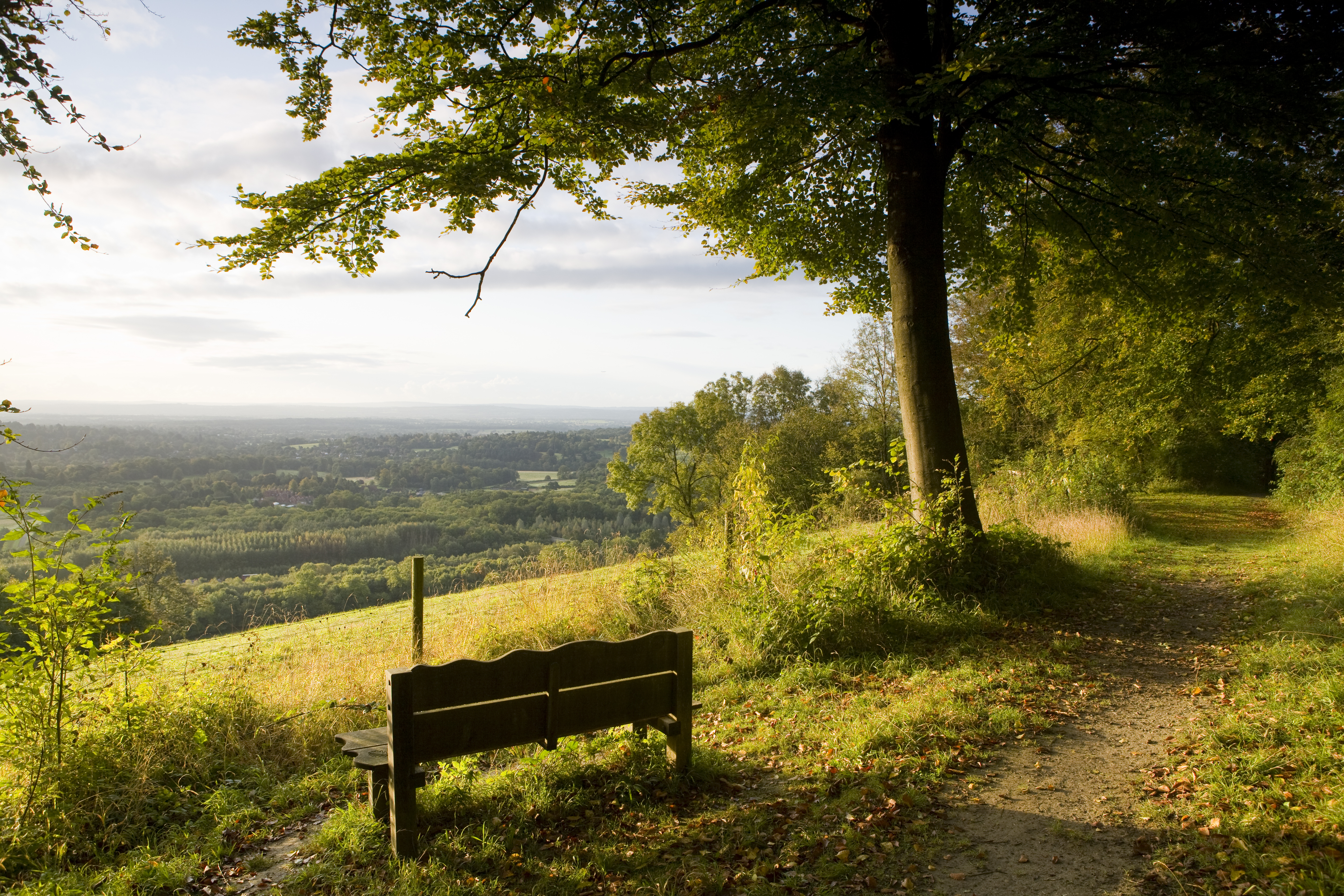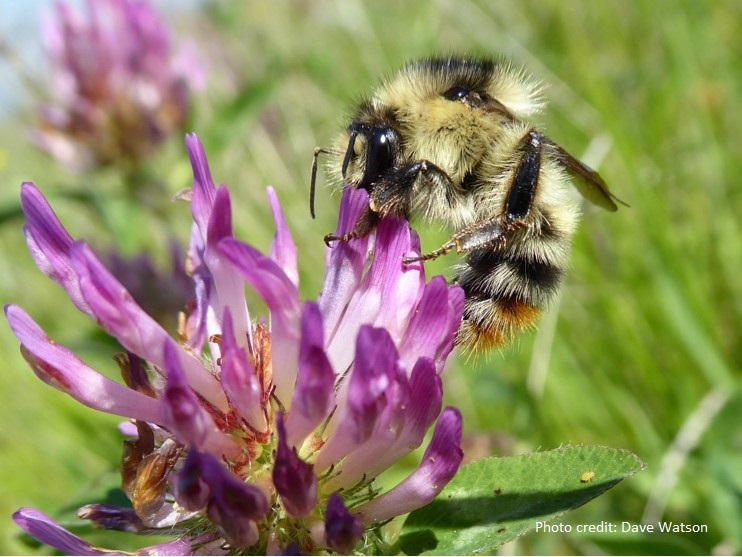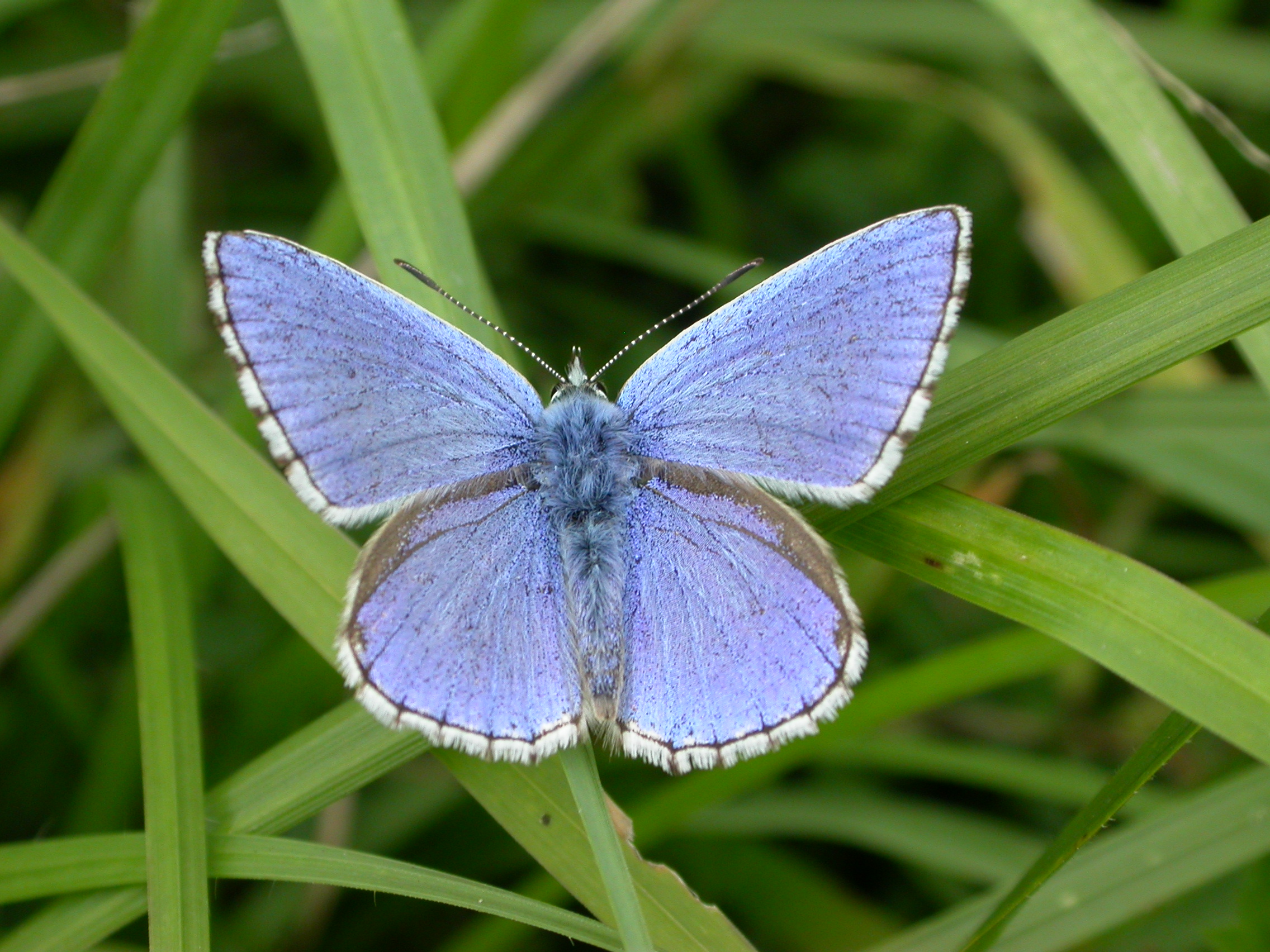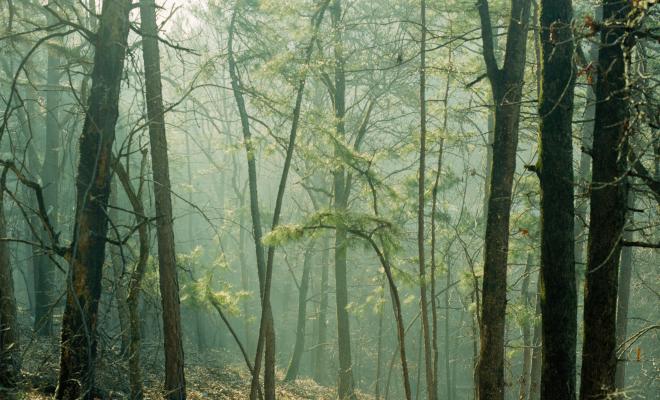08 May 2024
How is Action 49 tackling the climate crisis?
The Kent Biodiversity Strategy 2020-2040 aims to protect and recover threatened species through habitat maintenance, restoration and creation. The strategy specifically addresses the need to "climate proof" nature, and how nature in a good condition can act as a carbon store. The strategy also sets ambitions to help local communities access the health and wellbeing benefits created by nature.
The strategy was written by the Kent Nature Partnership, a collection of organisations working to safeguard Kent’s biodiversity. Kent County Council hosts and manages the Partnership. The strategy was published and adopted by the council in 2020. It sits alongside the council’s 2021 Plan Bee pollinator action plan and its commitment to plant 1.5 million trees, one for every Kent resident.
The Kent landscape is hugely varied and supports 20,000 species (nearly 30% of the UK total). 3,400 of these species are rare and threatened, including the lizard orchid, shrill carder bee and black-veined moth.
Kent is also home to 98 Sites of Special Scientific Interest (SSSIs), 2 Areas of Outstanding Natural Beauty (AONBs), and 5 of the UK’s 7 rarest bumblebee species. Kent’s rich habitats include vegetated shingle at Dungeness, the chalk grasslands of the Kent Downs and numerous marine habitats, the most diverse of any coastal waters in Europe.
This variety means Kent, nicknamed the Garden of England, is host to species unique to the county. Protecting the Kent ecosystem is of local and national importance. The biodiversity strategy aims to deliver biodiversity net gain (BNG), which means leaving nature in a better state than before, over 25 years. It has 4 central aims:
- Rich and growing terrestrial biodiversity, underpinned by resilient and coherent ecological networks and healthy, well-functioning ecosystems.
- Clean, plentiful and biologically diverse freshwater and intertidal ecosystems, underpinned by the implementation of a catchment-based approach.
- Contribute to reversing the loss of marine biodiversity and delivering clean, productive and biologically diverse oceans and seas through good management.
- Connect people with the natural environment so that the widest possible range of ages and backgrounds will be reaping the mental and physical health benefits of the natural environment, and the next generation is inspired to take on guardianship of the county’s biodiversity.
What impact has the project had?
While the strategy covers a 20-year period, it's intended that it will be reviewed every 5 years and features a range of actions taking place over a shorter period. Its detailed goals are extensive and precise, often divided into habitat and species-specific targets. If the strategy is a success, future impacts will include:
- Semi-natural habitat (places with important biodiversity that aren’t completely natural because they’ve been altered by people from their natural state, for example moorland) will cover 30% of Kent, up from the current 27%.
- 75% of SSSIs will be restored to a favourable condition.
- 375 km of Kent waters (lakes, rivers, canals, groundwater and coastal waters) will be improved.
- 730 hectares of chalk grassland will be created, and 770 hectares will be enhanced and restored by 2025.
- 49 hectares of lowland beech and yew woodland will be created, and 92 hectares will be restored by 2025.
- The existing population of approximately 1,500 male nightingales will be maintained.
- 23% of Kent’s residents will participate in environmental volunteering.
In the shorter term, the strategy has put Kent in a strong position to adapt to the changes introduced by the passage of the Environment Act 2021, including the requirement for responsible authorities to develop a Local Nature Recovery Strategy (LNRS) for their area.
What made this work?
Collective action
The Kent Nature Partnership’s strength is in its connections and ability to bring organisations and people together to combine their efforts. Consultation at all levels was essential to put together such a comprehensive and ambitious plan and fill gaps in the council’s own knowledge.
The long list of partners, including local conservation groups, district and parish councils, and government agencies, evidences the power of collective action.
Business sense
The value of nature as a source of food and raw material, and as a regulator of air, water, soil and climate, is embedded throughout the strategy. In it, the Partnership argues that "by investing in biodiversity assets we are investing in our own future and wellbeing".
Aside from the cultural and psycho-social benefits of nature, Kent’s natural beauty drives tourism that contributes £2.5 million to the county’s economy every year. The strategy also notes the financial damage avoided by the buffering effects of coastal wetlands during storms and flooding. Consideration of natural capital makes good business sense.
Political support
While some environmental issues at the council have resulted in debate, the nature strategy passed with unanimous support from councillors.
Good evidence base
The council has led and supported multiple nature surveys, providing a strong evidence base for the strategy, including:
- State of Kent’s Wildlife report (published in 2011 and updated in 2021), which tracks the status of wild plant and animal species in the county based on evidence recorded by volunteer groups. The intention is to keep repeating this on a 10-year cycle to track long-term trends.
- A joint habitat survey conducted by the council with the Conseil Regional of Nord-Pas de Calais in France.
- The Kent Habitat Survey (2012), which provided county-wide ecological information on habitat type as well as conservation issues and opportunities.
Specific targets
The level of detail included in the strategy is critical to its eventual success. Long-term overarching goals are combined with detail that ensures progress in the interim, avoiding action being delayed to an abstract future. For example, the strategy divides each of its 4 objectives into "priority species" and "indicator species" with accompanying action points.
What resources were needed?
Funding for the various nature restoration projects highlighted in the strategy comes from a range of sources:
- Department for Environment, Food and Rural Affairs’ Green Recovery Fund
- Public Health
- Kent County Council’s Members’ Grants
- RSPB
- Natural England
- Roger de Haan Charitable Trust
- National Lottery Heritage Fund.
Kent Wildlife Trust was commissioned by the Partnership to begin writing the strategy. The Trust received funding of £10,000 but delivered work beyond this as a contribution in kind. It's estimated that the Trust’s work was worth roughly £20,000, showing the importance of local partners. Two Kent Wildlife Trust officers and 2 Kent County Council officers worked on the strategy and were supported through the strategy’s Task and Finish Group by a further 13 officers from a range of Kent Nature Partnership organisations.
Four members of staff at the council were involved in developing the strategy. To uphold its new legal obligations under the Environment Act, the council has hired 4 new biodiversity officers.
Work on the strategy began in 2018. Stakeholder engagement and formal consultation followed in 2019, with approval by both the wider Kent Nature Partnership and Kent County Council in 2020.
Lessons from Kent
Shifting national policy and priorities
A key lesson is to keep close track of policy changes at the national level, but this can result in delays to progressing local strategies.
The spatial side of the strategy (interpreting and mapping the county-wide biodiversity goals at a district level) was put on hold as the Environment Bill progressed, in anticipation of the requirement to produce a LNRS. These are spatial plans which establish biodiversity priorities specific to an area and map its habitats. A responsible authority is assigned for each recovery strategy, and Kent County Council is the responsible authority for its area.
Now that the Environment Act has passed and national government has provided guidance, Kent has begun the process of translating its broader goals down to the local level. In September 2023 Kent and Medway began the development of its LNRS, called “Making Space for Nature”. This process will map the most valuable existing areas in the county for nature, as well as the areas where habitats can be improved or new ones created. It will also identify where habitats can improve the wider environment including water, reduce flood risk, and aid climate mitigation and adaptation. By 2025 Kent and Medway will have a spatial strategy that focuses action where it’s most needed and where it will deliver the greatest benefits. Kent will also be implementing a new in-depth biodiversity reporting and monitoring mechanism, as required by the new legislation.
The Kent Nature Partnership will continually sense check the Biodiversity Strategy to ensure it remains consistent with the new LNRS as it evolves.
Leaving the European Union also led to uncertainties about farming policy, which is fundamental to the restoration of nature in a rural area like Kent. There are still questions about how effective the new UK farmer payments schemes will be for recovering biodiversity and ecosystems on farmland, but engaging farmers will be essential for the success of the LNRS.
Biodiversity net gain (BNG)
Under the Environment Act, it’s now mandatory for developers to implement BNG, the aim of which is to leave nature in a better state than before. This means that local planning authorities need to be well versed in how developers can meet the 10% improvement, which is the minimum statutory requirement. However, there are concerns about whether 10% BNG really delivers gains for nature, and Kent is going a step further by considering a 20% BNG benchmark.
In June 2022 the council commissioned a viability assessment to find out whether a 20% BNG policy was possible and reasonable. The assessment found:
- An increase to 15% or even 20% wouldn’t cause a significant impact on viability in the majority of cases.
- The biggest cost for developers is reaching 10%, but any increase after that is far less and generally negligible.
- The assumption that 20% BNG would mean double the land area and double the cost is a misconception.
The target would be county-wide and is already supported by Canterbury, Sevenoaks and Swale councils. Other local authorities wanting to do more for nature-friendly development will require a similar viability assessment to support their case. But Kent’s findings are a positive indicator that viability shouldn’t be a barrier.
This evidence-based approach will be all the more important since new government guidance was issued in February 2024 stating that: “Plan-makers should not seek a higher percentage than the statutory objective of 10% biodiversity net gain, either on an area-wide basis or for specific allocations for development unless justified. To justify such policies they will need to be evidenced including as to local need for a higher percentage, local opportunities for a higher percentage and any impacts on viability for development”.
Pressures on nature
Kent is one of the most biodiverse counties in England. It faces some ecosystem pressures that are specific to the county, for instance its closeness to London and status as a gateway to Europe via road, rail, sea and air. Its international connections also risk bringing in invasive species and plant or animal diseases, something the strategy addresses.
However, Kent also faces challenges presented by growth targets experienced by local authorities across the UK. The county must accommodate a predicted 178,600 new homes and 396,300 extra residents by 2031 in an already densely populated region of the country. There's fierce competition for the same land needed to restore and expand habitats.
Realistic goals
Another challenge experienced in Kent was being realistic about the power and influence local authorities have to tackle the big issues. For example, it wasn’t feasible for the Kent Nature Partnership to commit to a target of zero microplastics in its marine waters, because too many factors were out of its control.
County-level partners don't have the power to address the wider national and international threats to biodiversity that are felt at a local level. Reviewing which issues the Partnership could positively intervene and have an impact on was important to keep the strategy pragmatic. Councils may also want to consider getting behind initiatives to increase the power, capacity and resources available to them to implement nature strategies, such as the Blueprint Coalition.
"It’s great to have big ambitions like halting biodiversity decline, but if you don’t actually consider how you’re going to do that and whether it’s achievable, a decade later you won’t have achieved it. It’s better to do things in small steps, make things achievable, and work towards the big picture by breaking it down. This focuses on the Kent Biodiversity Strategy."
Elizabeth Milne, Natural Environment and Coast Manager at Kent County Council
Include delivery partners
A related key lesson is to have a diverse and broad steering group that represents all relevant sectors. By including partners who are involved in implementing the strategy, Kent has kept its goals ambitious yet grounded in deliverability. The strategy identifies 15 priority habitats and assigns a champion organisation that has ownership of the targets for each. Having a wide variety of partners made this possible.
"The Kent Nature Partnership is a network of brilliant partners, who are not only engaged and active – which is crucial – but who are also broad. All the partners are very informed and know their subject areas. Consequently, all the way through writing the Kent Biodiversity Strategy was being constantly peer-reviewed. Having that partnership with strong engagement from all sectors meant that what we were proposing was bold but pragmatic."
Elizabeth Milne, Natural Environment and Coast Manager at Kent County Council
Protect and restore
New habitats mustn't be the sole focus. Instead, prioritising the protection and enhancement of existing habitats offers the greatest potential for results, because new habitats take years to reach maturity and become fully functioning. The 2 aspects must complement each other. The principle of the right intervention in the right place is crucial to keep things in balance, because the creation of one habitat may negatively affect another.
Useful information
- To find out more, contact Elizabeth Milne: [email protected]
- Read the extended Kent Biodiversity Strategy.
- Read the Kent State of Nature report.
- Kent’s Plan Bee is also available.
Related projects
We've found some examples of other council activity on this topic.
- Wiltshire Council’s strategy aims to create a network of green and blue spaces to support nature and the community.
Friends of the Earth's view
It’s good to see Kent County Council take a comprehensive approach to protecting and restoring nature, linking action for nature with tackling climate change and the wellbeing of its residents. It will be interesting to see how its broad goals are translated into actions at a local level.
Government support will continue to be critical, both in terms of resourcing and having the right national policy frameworks in place. The government's stance on BNG is contrary to its own stated aims, but Kent's evidence-based approach should give other councils the confidence to be ambitious.
Councils can also make a difference on the land they own by managing it better for nature (Action 47 in the Climate Action Plan for Councils) and can use local planning policies to require development to meet high standards for nature and climate alike.
Friends of the Earth is showcasing specific examples of good practice in tackling climate change, but that doesn’t mean we endorse everything that a council is doing.
This case study was produced by Ashden and Friends of the Earth. It was originally published in February 2022 and was last updated in May 2024.







